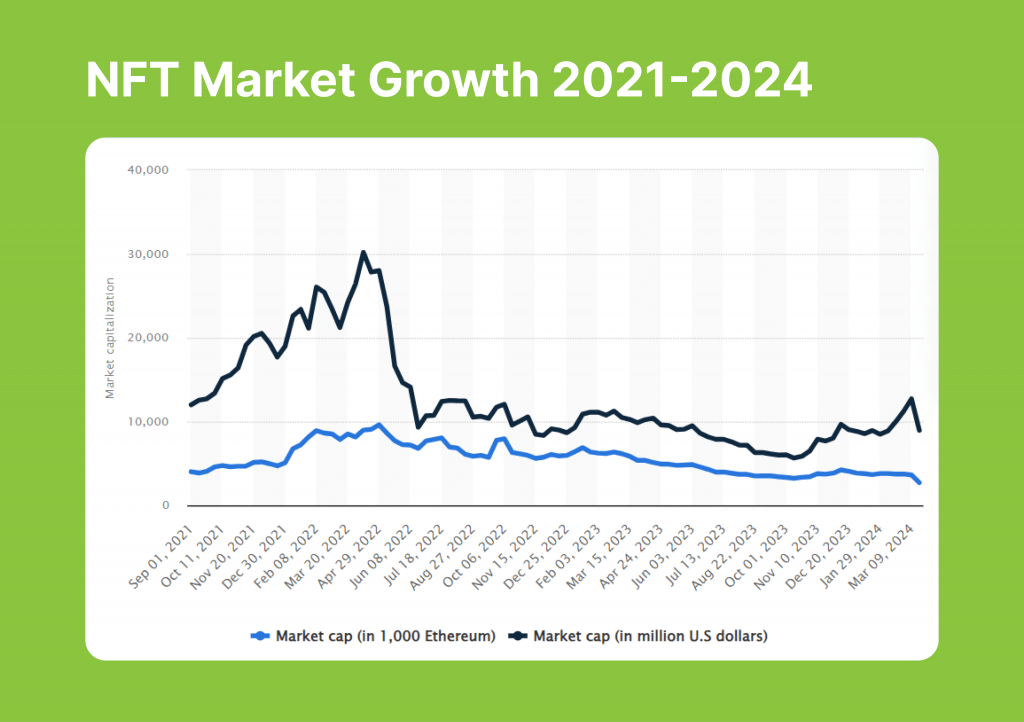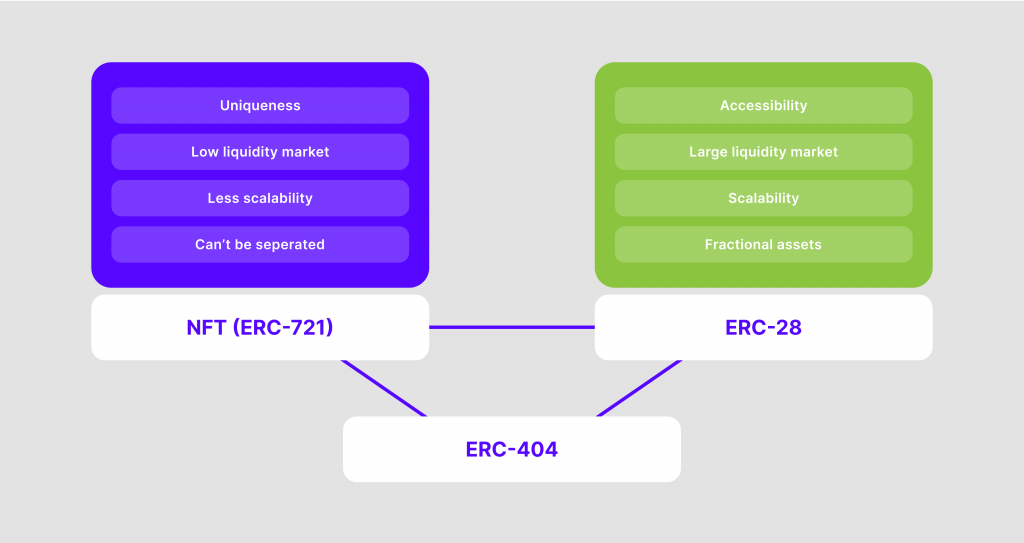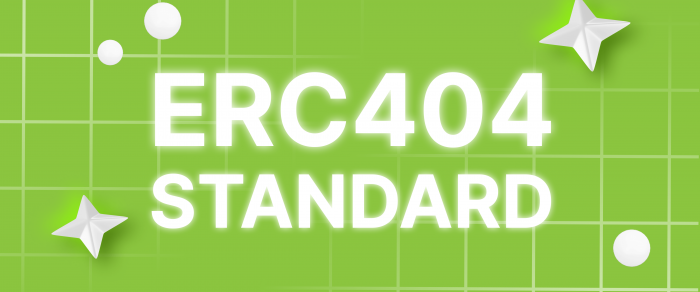ERC404 Standard: What is it, and Why Does it Matter?
If there is one thing that best characterizes decentralized economies, it is the rapid introduction of solid technologies that elevate cryptocurrencies and blockchains above and beyond every expectation.
Due to the tremendous growth of these markets, technology has to cope with contemporary security and scalability challenges continually. Ethereum, the second-largest blockchain network and a major developer of DeFi ecosystems, has released a new innovative feature for its decentralized infrastructure.
ERC-404 standard is a newcomer for Ethereum users and developers, providing strong utilities that combine fungibility and non-fungibility. Let’s discover what the new ERC404 contract has to offer.
Key Takeaways
- Ethereum announced a new experimental ERC-404 standard that combines ERC-20 and ERC-721.
- The new ERC-404 offers a mixture of fungible and non-fungible tokens.
- ERC404 tokens are expected to allow fractional NFT ownership, boost NFT funding pools, and improve the utility token ecosystem.
Understanding the ERC 404 Standard
To give an overview, Ethereum standards or token standards are methods of operations that dictate the nature of processing, exchange, deployment, and minting of cryptocurrencies, tokens, and dApps.
Each standard refers to a given utility. For example, ERC-20 protocols refer to the regulations of token creation on the Ethereum chain, while the ERC-4337 standard pertains to ETH multi-sig wallets, etc.
The new ERC404 standard is an experimental protocol that mixes features of ERC-20 and ERC-721. In other words, combining characteristics of crypto tokens (ERC20) and non-fungible tokens (ERC721)
This unique offering gives digital assets the tradeable characteristics of crypto coins while keeping the scarcity features of NFTs. This leads to fractional ownership of NFTs, digital arts, and other unique intangible assets.
Ultimately, this can open the door for a new way of trading high value digital assets and breathe life into NFT marketplaces that have lost their glow recently.

How Does The ERC-404 Tokens Work?
In its essence, ERC404 coins allow fractional holding of digital assets by deploying smart contracts that facilitate collective ownership using tokens. Thus, each crypto token represents a share of the subject asset.
The experimental Ethereum token standard might work similarly to stock trading, where investors hold shares of the company that represent the total corporate value. However, in this context, each token holder owns a part of the entire NFT, and if they can afford to buy all the tokens, they can claim full ownership of the NFT.
Integrating ERC-20 and ERC-721 Standards
The new standard provides a unique mix by issuing fungible tokens and associating them with a non-fungible asset, adding more flexibility and potential to asset ownership in decentralized settings.
This adds more features to NFT trading and minting, which had slumped recently after booming between 2021 and 2022 when around $18 billion worth of NFTs was transacted.

Flexible NFT Ownership
Fractional ownership of NFTs can spur more demand for popular collections and rare collectible tokens. Moreover, as an unconventional token standard, more realms can be discovered in this aspect that facilitates collective ownership of digital assets, ecosystems, and utility tokens.
Scalable Token Minting
Since NFTs and fungible tokens are linked in the new ERC404 standard, the fractional trading of tokens leads to burning NFTs to maintain a healthy balance.
This dynamic supply can aid multiple decentralized applications and crypto projects, attracting investors and traders who can buy and sell fractional tokens and attract demand for the underlying asset.

Use Cases of The New ERC Token Standards
The new token minting standard can open a broad range of possibilities for NFT and crypto investments, boosting DeFi projects and utility tokens at a particular metaverse or virtual real estate.
Mixing the characteristics of fungible and non-fungible tokens opens up endless possibilities, giving a new dimension to the creator’s economy in a decentralized setting and expanding the virtual world’s infrastructure. The main use cases of these semi-fungible tokens can be concluded in the following.

- Digital Art & Collectibles: The new ERC-404 standards make indulging in digital artistry more accessible. Under these standards, more than one user can collectively share ownership of a rare collectible item or a digital drawing.
- Decentralized Liquidity Sourcing: New established crypto projects and applications can pursue public investment through decentralized funding sources.
- Crypto Games & Metaverse: Play-to-earn gaming and virtual worlds can offer an extended utility to their central crypto token by combining cryptocurrencies with NFTs.
- Investing in Real Estate: Virtual property has been attracting top investors and celebrities. However, enabling fractional ownership opens the door for more participants to claim their shares.
Fast Fact
Metaverse property gained huge popularity in 2022 as celebrities started owning virtual real estate. One user paid $450,000 to be Snoop Dogg’s neighbor in Metaverse real estate.
Projects Built on The ERC-404 Tokens
Since the release of the ERC-404 standard, several crypto projects and applications have emerged with a native token that offers new use cases that combine the characteristics of NFTs and fungible tokens.
Pandora ERC-404
Despite being an unofficial token standard, the Pandora crypto project was developed on the premise of ERC404, resembling the benefit of fractional NFT ownership.
A few days after the project was launched, the token price crossed over $30,000, garnering much attention from the crypto community to the advanced utilities the ERC404 coins can bring. The price dipped a few weeks later. However, it remains above the $10,000 mark.
Defrogs ERC-404
Defrogs project followed the success of Pandora ERC404, but with a different offering. Defrogs featured an NFT collection of 10,000 from profile picture, where users can buy a token to mint and fractionally own a Defrog PFP.
This project’s price spike after launching was huge, surging to $3,400. However, it cooled down after that and traded for less than $1,000 for most of March 2024.
Anon ERC-404
Anon ERC404 is another crypto project that deploys ERC404 by offering gaming cards as NFT. Each card is linked to an ANON token. When a user buys one token, they receive a random gaming card NFT that is burned and minted to the player’s ownership.
Anon tokens were released at $17,000. However, the price dropped soon after that to $2,000 for one month before crashing to $12 by the end of March 2024.
The Future of The ERC-404 Coins
The Ethereum improvement proposal has notified communities that the ERC404 contract is still an experimental project. Nevertheless, several networks were developed to deploy ERC404 and offer its unique features. However, from what we have seen, this standard has distinct potential and some limitations.
Possibilities
- Buying and selling NFTs to liquidity pools without having to find a new direct owner.
- The ability to buy/sell fractions of digital arts, assets, and NFTs.
- Boosting the use cases of NFT arts and marketplaces.
Limitations
- As an experimental token, dealing with ERC404 projects might not be safe yet.
- Use cases are still theoretical and lack practical uses that may reveal a few vulnerabilities or potential security risks.
Conclusion
Ethereum ERC-404 standard is a new token protocol that combines ERC-20 and ERC-721 standards, offering a unique mixture of fungible and non-fungible tokens.
This combination is projected to provide unique use cases that benefit from the monetization features of crypto tokens and the scarcity characteristics of the novel NFT.
There are several utilities the ERC404 coins can bring, such as fractional NFT ownership, increased NFT liquidity pools, and finding a new creator’s economy for metaverse projects and crypto games.
This experimental standard is still under development. However, many projects were developed to put this token type into practice.



